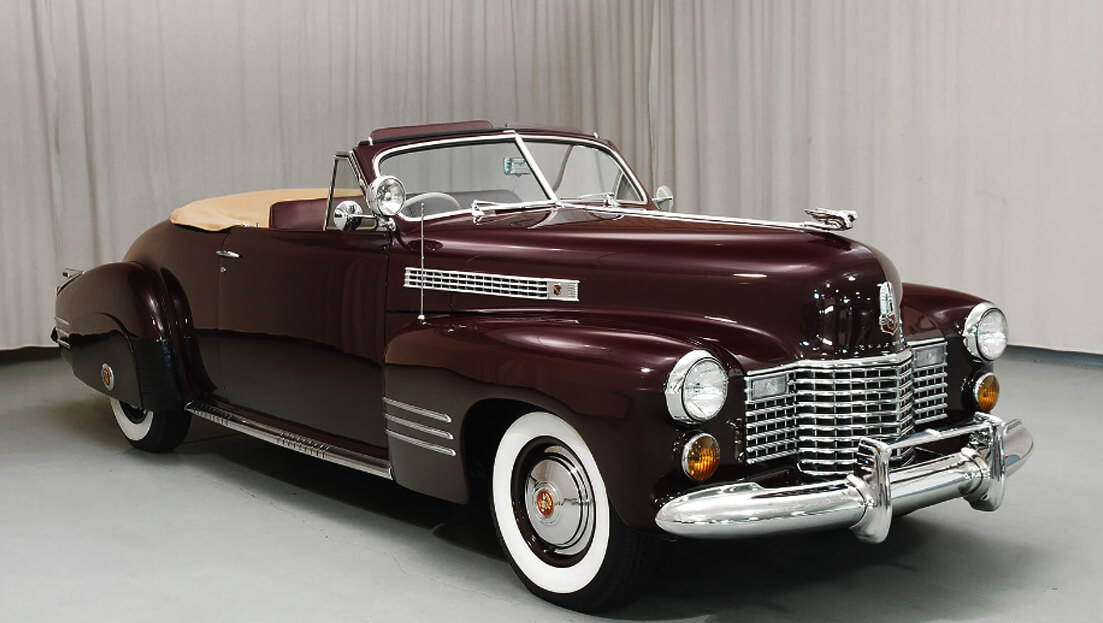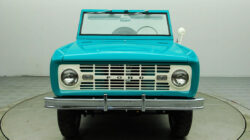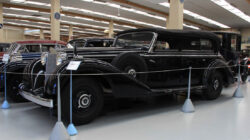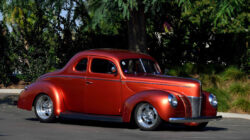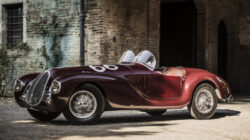The 1941 Cadillac Series 62 was the first in the series to sport the name that would remain with it through 1964.
Known as one of the most beautiful cars ever produced, this masterpiece of design and engineering has stood the test of time, becoming an American classic that can now be found on display in museums and at car shows around the world.
If you’re looking to own a piece of automotive history or are just interested in what this iconic car was like when it rolled off the assembly line 70 years ago, check out our complete look at the 1941 Cadillac Series 62 below!
A Classic Review of the 1941 Cadillac Series 62
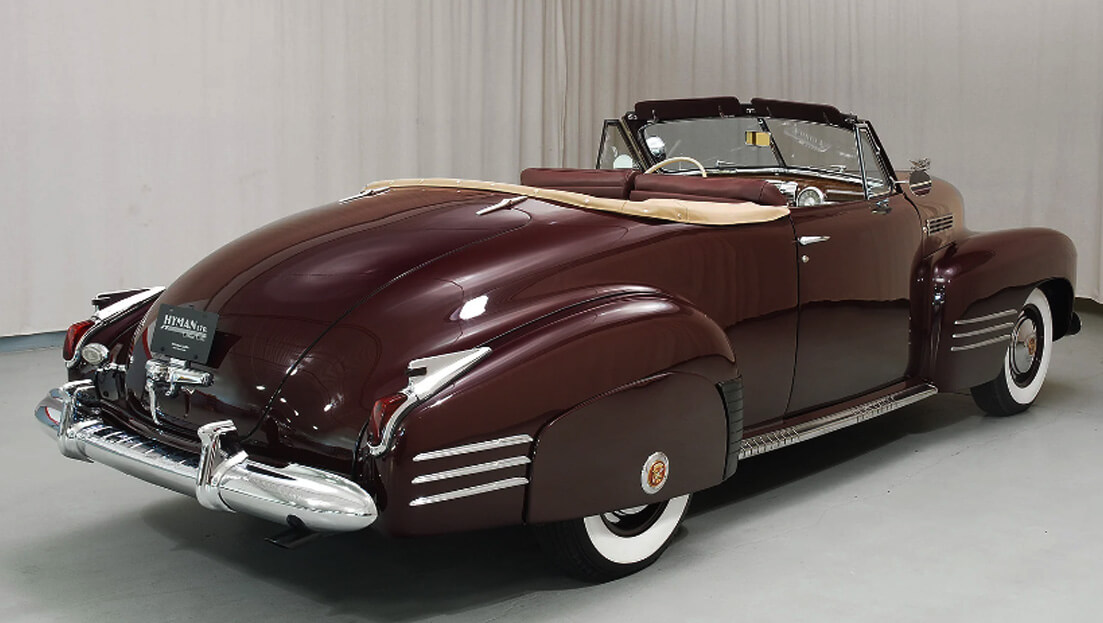
Many cars from the ‘1940s and ‘1950s are seen as classics today, but few were more iconic than the 1941 Cadillac Series 62.
This beautiful vehicle has been featured in dozens of films and television shows because of its unique styling and retro feel.
Which makes it perfect for 1940s classic car lovers looking to add something special to their car collection. Here’s what you need to know about the 1941 Cadillac Series 62!
An Introduction
If you had to choose one word to describe the 1941 Cadillac Series 62, it would have to be classic. With sweeping curves, a smooth ride, and flawless handling, not to mention that huge hood ornament, this luxury vehicle was truly ahead of its time when it first hit the road back in 1941.
The car was first released by GM as a 1930s version of what it called a personal luxury car, which wasn’t exactly new at that point; designers had been looking for ways to build more comfortable cars for over three decades already.
After years of hard work and development, Cadillac introduced its very first series in 1936 and added models such as these each year after until World War II intervened around 1941.
Read also: 1940 Cadillac Fleetwood – The Most Elegant and Expensive Car of Its Time
Design
Compared to 1940 models, which had a rather boxy look, Cadillacs for 1941 grew a little longer and sportier. The headlights now blended into the fenders and were positioned lower on each side.
Viewed from behind, rear fenders sloped downward toward tail lights that were larger than before and placed closer together at an angle.
Overall length increased from 200 inches to 202 inches, making room for more passenger space up front.
Engine
Even though many different car manufacturers were at war in 1941, some engineers and designers managed to keep their focus on creating reliable and quality engines for consumers.
The beautiful 1941 Cadillac series 62 engine offered performance for longer commutes but also provided a smooth ride, especially since gas prices hadn’t shot up like they do today.
Although it was an entirely new design from what previous vehicles had to offer, much of its beauty can be attributed to the French influence on classic American auto manufacturers during that time period.
Many companies enlisted France for guidance when creating their sleek engines during World War II as part of a collaborative effort between allies.
Interior
The 1941 Cadillac series 62 interior is gorgeous. When I first got in it, I sat in comfort; inside, everything from seats to switches and knobs was ergonomically placed for optimum control and ease of use.
If you’re looking for a car with an interior that’s going to impress your friends, the 1941 Cadillac series 62 might be right up your alley.
The most impressive thing about its interiors? Each component was made to last – and they have!
From interior components like armrests, sun visors, and seats to power options like windows, doors, seatbelts, and AC cont, roles, each part fits together nicely as if it were put there yesterday. It felt so real!
Performance
The 1941 Cadillac Series 62, sometimes known as the forties series, had several performance changes when compared to 1940 model year vehicles. It featured a V8-265 engine with a wheelbase.
The 4-speed column shift was new. It also came with a push-button clutch and parking brake, rather than floor pedals.
Other features included 3 sets of wipers that could be adjusted separately, multiple horns, backup lamps, dual sun visors, and heater/defroster vents in each side window.
Back in 1940, Cadillac started looking to pack more performance into its cars. The sportier Cadillac Sixty Specials were born out of that desire.
Two years later, in 1940, Cadillac went even further by introducing a limited-edition roadster dubbed The Boattail Speedster.
That car was meant to test (and sell) people’s interest in high-end performance Cadillacs, but it wasn’t until after World War II that Cadillac finally decided to introduce their first true production high-performance luxury car: The Series 62 Boattail Speedster.
How does it compare to other Cadillacs from its era?
Other luxury vehicles from its era offer far more style and performance. Compared to cars like the 1938 Packard, for example, it was a half-step up in terms of both design and engineering.
It had all three body styles, including a pretty hard-to-miss phaeton model with two doors and four seats, quite impressive by early 1940s standards.
The interior wasn’t as lavish as other higher-end Cadillacs; however, it was still grand enough to impress most buyers at that time, few people had ever seen anything like it before.
Read also: Mazda Miata 1995: The Perfect Used Car
A Brief History of the Cadillac Series 40-62
The 1938 model year marked a fresh start for Cadillac after a decade of relatively stagnant sales.
Though it was still a large car (the standard wheelbase had increased in 1937 to 119 inches), it was now lighter and sleeker than ever before, with an emphasis on form following function.
The classic rear-drive trunkback sedan styling lasted through 1942, although there were significant changes made each year: 1939 saw an increase in overall length to 120 inches.
While 1940 brought wider pillars and corner windows similar to those on Packard’s new straight-eight series.
With its massive grille, dual quad headlights, and integrated fender skirts, 1941’s styling is arguably one of Cadillac’s most impressive designs ever.
The 1941 Cadillac Series 62 marked an important departure for its manufacturer. Cadillacs had always been known for their luxury features and technological innovation, but 1941 marked a shift from these traditions that created a lighter, more agile car.
That year, General Motors introduced independent front suspension on all of its full-size models.
Independent front suspension provided better handling and paved the way for America’s love affair with cars equipped with such features as power steering and power brakes.
While European manufacturers had already incorporated these improvements into their cars several years before, GM was still riding high from its victory over Ford in 1940.
To determine who would produce tanks for Britain during World War II (GM won) when it first offered a car with independent front suspension in 1941.
First Generation – Model 401 – from 1940–1946
The Series 40 was introduced in 1940 as a companion model to the range-topping Series 61. The new car included everything found on the larger car and even included a radio as standard equipment, yet it was offered at only $400 more than its sibling.
Styling followed tradition, featuring twin bullet taillights set into massive fenders and paired with dual exhaust pipes peeking out from under semi-flared rear fenders.
On every car, both front and rear parking lights were combined into one unit mounted horizontally between headlights on each side of bumpers with raised centers.
Some models featured a small chrome trim strip running across body sides that matched two chrome strips on the hood and trunk lid respectively.
Second Generation – Model 42E (1947–1950)
This generation had no significant changes from its predecessor, though a new two-door model, known as the club coupe, was added to replace the 1940s club sedan.
The exterior trim was slightly restyled with a grille featuring 12 vertical bars, replacing 11 on previous models.
Club sedans also featured a cap over their rear fenders, while all other models carried stainless steel bumpers painted to match body color.
Interior trim could be of either cloth or leather; both materials were used in higher grades of Cadillacs produced before 1942 and after 1949.
The high-grade models included Custom 75 and Fleetwood 75 introduced in 1948 and LeSabre in 1949.
Third Generation – Model 63E (1951–1957)
For 1951, Cadillac again reworked its line. A bigger engine was made standard for all cars, and a new long-wheelbase model (the Seventy-Five) was added to fill out the range above it.
The Seventy-Five featured only two doors but came with 4 or 6 seats depending on customer specification.
Like previous versions of their big cars, customers who preferred their bodywork not to be shared with lesser models could order Custom or Custom Fleetwood versions from select dealerships.
The most notable cosmetic change made in 1951 involved changing all taillights from being round to shaped like squarish rectangles.
This change remained until 1956 when circular taillights would once again be used on Cadillacs.
Fourth Generation – Model 44 (1960–1963)
The final year of production for each variant was 1963. In 1960, standard equipment on all Cadillacs included a new all-synchromesh 4-speed manual transmission with column shift and floor-mounted gearshift lever (the same as used in Chevrolet cars).
An all-new cast aluminum V8, rubber isolation mounts to reduce vibration (used previously only on Eldorados), four-wheel hydraulic brakes, and safety shoulder belts.
The engine displacement remained 346 cu in (5.7 L) but power increased to 325 bhp (242 kW). In midyear 1961, Cadillac introduced Turbine Drive as an option on Series 61 models.
Fifth Generation – Model 64 (1964–1965)
Like its predecessor, a subtle restyle made few changes to an aging design. The radiator shell was squared off at both ends and had a large Cadillac script mounted on its hood.
A new grille featuring six vertical bars with integrated headlamps was used, as well as revised tail lamps.
The chassis remained virtually unchanged from 1963 with its semi-elliptical leaf springs in front and four-link rigid axle in back. 15-inch wheels were standard and 16s were optional.
Powering these big Cadillacs was Cadillac’s 472 cubic inch V8 rated at 360 hp which moved it along briskly enough to reach 60 mph in 10 seconds before topping out at about 100 mph depending on the gear ratio chosen.
Frequently Asked Questions (FAQ)
What is a Series 62 Cadillac?
The Cadillacs from 1941 onward were all simply called Cadillac, though with four different model names: Fleetwood, Sixty Special, Sixty Special Deluxe, and Sixty Special Fleetwood.
A step up from these was the long-wheelbase Super, which sat six passengers instead of five. 1941 saw a 5% increase in sales over 1940, despite (and perhaps partly because) U.S. auto production fell by 17%.
The engine on a 1941 Cadillac Series 62 was a V8 OHV design, delivering 135 horsepower at 3200 rpm and 290 lb-ft at 1600 rpm via a three-speed synchromesh transmission driving through mechanical gears.
How much is a Cadillac Series 62?
The 1941 Cadillac Series 62 was manufactured by General Motors, starting in 1941. The 1941 model came equipped with a V-16 engine that produced 120 horsepower.
The price ranged from $2,000 to $3,500, depending on features and options. That’s more than $30,000 in today’s money; a hefty price tag for a luxury car.
It also didn’t sell well during World War II when Americans focused on more frugal vehicles like trucks and sedans.
Despite its popularity now as an antique car (some experts say it’s one of America’s greatest classic cars), very few are still around today.
Is a Series 62 A DeVille?
The 1941 Cadillac series 62 is a commonly confused name with another one of General Motors’ most iconic models.
It should not be referred to as a DeVille, even though it was made by GM and is powered by their engine. The confusion between these two vehicles comes from the fact that they are both large, luxury cars.
The DeVille has a more modern design compared to its counterpart, but at least back in 1941 they looked similar and were sold in some places as a luxury alternative to one another.
So what exactly is different between these two vehicles? Why do people think they are so similar? Is there really any confusion between them at all?
Final Thoughts
The 1941 model year marked a number of changes for the Cadillac. In fact, it’s considered one of its most influential years ever.
The biggest change was in its V-16 engine which boasted more power and torque than ever before.
Unfortunately, production was suspended during World War II, with only 508 vehicles completed by 1942. Postwar models are highly collectible today and are often restored to like-new condition.
